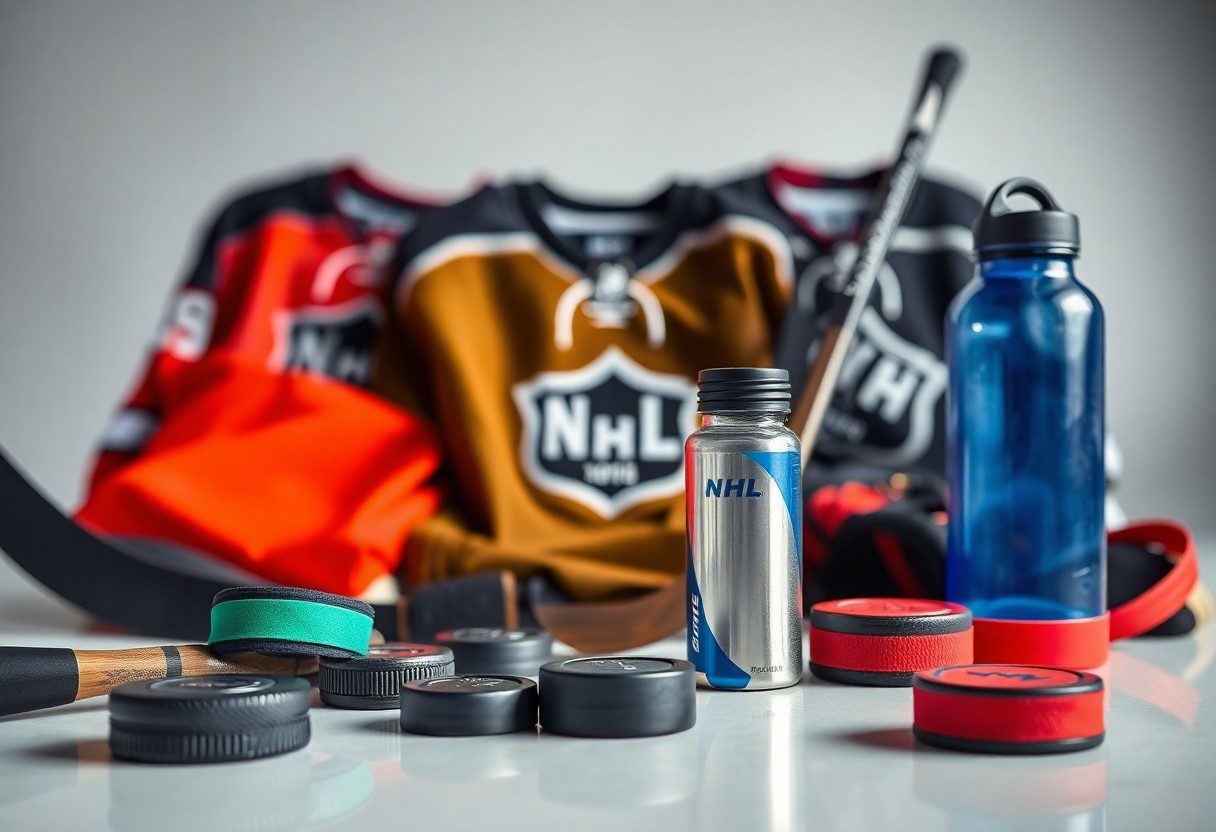Betting on NHL games often involves choosing between the moneyline and puck line, two distinct wagering methods that can significantly impact your potential returns. The moneyline focuses solely on the outcome of the game, offering a straightforward approach, while the puck line incorporates a points spread, making it crucial to understand how each market operates. By grasping these betting options, you can make more informed decisions, optimize your strategies, and enhance your overall betting experience in the NHL landscape.
Understanding Moneyline Betting
Moneyline betting is a straightforward yet popular method for wagering on NHL games. Instead of considering point spreads, bettors simply choose the team they believe will win the game outright. This form of betting simplifies decisions, focusing purely on the outcome rather than the margin of victory.
Definition of Moneyline
The moneyline is a type of betting system that assigns odds to each team based on their likelihood of winning. For example, if the Toronto Maple Leafs have a moneyline of -150, a bettor would need to wager $150 to win $100. Conversely, a team with a moneyline of +130 indicates that a $100 bet would yield $130 in profit if that team wins.
How Moneyline Bets Work
In moneyline betting, odds reflect the perceived strength of each team. Negative odds indicate the favorite, while positive odds represent the underdog. For instance, if the Colorado Avalanche are at -120 and the New York Rangers are at +150, the Avalanche are expected to win. When betting on the favorite, a larger stake is required to win a standard amount, while betting on the underdog offers a higher return for a smaller bet.
The simplicity of moneyline betting attracts both beginners and experienced bettors. For example, if you wager $100 on the Avalanche and they win, you would receive a total payout of $183.33 (your initial stake plus $83.33 in profit). In contrast, a $100 bet on the Rangers could net you a total of $250 if they win, showcasing the risk-reward dynamic inherent in moneyline bets. Understanding these nuances helps bettors make informed decisions in an ever-competitive NHL betting landscape.
Exploring Puck Line Betting
The puck line is a form of betting unique to hockey that combines elements of point spreads with traditional moneyline bets. In most cases, the puck line is set at ±1.5 goals, requiring the favorite to win by at least two goals, while the underdog can lose by one goal or win outright to cover the spread. This creates a more dynamic betting experience compared to straightforward moneyline wagers.
How Puck Line Bets Work
Puck line bets operate on a similar premise to point spread betting in other sports. If you bet on a favorite with a puck line of -1.5, they must win by two or more goals for your bet to be successful. Conversely, a bet on the underdog at +1.5 allows you to win your wager if they either win the game outright or lose by a single goal. Commonly, the odds are adjusted based on team performance and matchup factors, influencing potential payouts.
When placing a puck line bet, consider factors like team scoring efficiency, past matchups, and situational elements such as injuries or travel fatigue. For example, if the Toronto Maple Leafs, a strong team, face off against a weaker opponent and enter with a -1.5 puck line, they must dominate the game to secure your win. With hockey’s low-scoring nature, a single goal can sway outcomes significantly, making puck line bets both exciting and strategically complex for bettors.
Key Differences Between Moneyline and Puck Line
The primary distinction between moneyline and puck line betting lies in their structure. A moneyline bet simply revolves around which team will win the game outright, with odds reflecting the perceived strength of each team. Conversely, the puck line incorporates a spread—typically set at 1.5 goals—requiring the favored team to win by at least two goals to cover the bet. This introduces a different dynamic that can significantly influence potential payouts and strategies for bettors.
Risk and Reward Analysis
Betting on the moneyline generally offers a straightforward risk-reward scenario, particularly when favoring underdogs, who can yield higher payouts with lower stakes. Puck line betting, on the other hand, often presents greater risk due to the necessity of covering the spread. While favored teams appear safe bets, if they don’t win by the required margin, the wager is lost, which can amplify the stakes involved significantly. Strong teams can sometimes provide safer returns on the puck line, but their odds may not be as favorable as underdogs on the moneyline.
When to Use Each Betting Type
Choosing between moneyline and puck line betting depends largely on the specific game context and strategy. For instance, moneyline bets are often more appealing when backing a strong favorite expected to dominate, while betting on the puck line is advantageous when a team consistently performs well offensively, thus increasing the likelihood of covering the spread. Factors like team matchups, injury reports, and recent performances should guide these decisions.
Utilizing moneyline betting is typically recommended for close matchups where predicting a winner may be more advantageous, especially if one team has a strong home-ice advantage. In contrast, if one team is significantly stronger and likely to secure a decisive victory, relying on the puck line can maximize potential returns—given the team covers the spread. Bettors should analyze team stats, individual player performances, and game situations, making informed choices that align their betting strategies with the likelihood of outcomes.
Strategies for Betting on NHL Markets
Enhancing betting success in the NHL hinges on analyzing various factors, including team stats, player performance, and match conditions. Punters should explore trends such as a team’s home vs. away performance and their record against specific opponents. Employing analytics, such as Corsi and Fenwick ratings, can provide deeper insights into team strengths and weaknesses, enhancing betting decisions. Staying updated on injuries and line changes is also important, as these elements can significantly affect game outcomes and betting lines.
Analyzing Team Performance
Evaluating team performance involves looking at key metrics like goals scored, goals against, and overall shot differential. Tracking teams over time reveals patterns that can indicate potential upswings or downswings. For example, a squad consistently outperforming their expected goals (xG) ratio may be on the verge of a breakout. Historical matchups can also illuminate how particular teams fare against each other, providing context that may favor a specific betting line.
Considerations for Bet Placement
Strategically placing bets demands careful consideration of multiple factors beyond just team statistics. Pay attention to game schedules, as teams playing back-to-back games often struggle. Weather conditions, such as humidity in southern arenas, can impact player performance, particularly goalies. Additionally, line movements may indicate where the money is flowing, guiding your betting choices. For example, a significant shift in odds could signal insider knowledge, suggesting a better opportunity exists for one side.
Common Misconceptions in NHL Betting
Misunderstandings about NHL betting can lead to misguided strategies and lost wagers. Beginners often conflate the moneyline with straightforward outcomes, neglecting the complexities of goal differentials in the puck line. Additionally, the notion that betting on favorites guarantees wins fails to account for the unpredictable nature of the sport, where upsets are commonplace. Clarifying these myths is important for improving betting strategies and enhancing overall knowledge of the NHL betting landscape.
Moneyline vs. Puck Line Myths
One prevalent myth is that moneyline bets are always safer than puck line bets. In reality, betting on the moneyline involves risk, especially when wagering on heavily favored teams that offer minimal returns. Conversely, the puck line introduces the concept of goal differentials, which can provide better value, especially in close matchups. Understanding these aspects is vital for developing a balanced betting approach.
Understanding Betting Odds
Betting odds represent the probability of a team winning, as well as the potential payout for a successful wager. They are often displayed in American, fractional, or decimal formats. For instance, odds of +150 indicate that a $100 bet would yield a $150 profit if successful, signifying that the team is an underdog. Conversely, -150 odds mean a bettor must wager $150 to earn a $100 profit on a favorite. Analyzing these odds provides insights into public perception and team performance, guiding more informed betting decisions.
Conclusion
Summing up, understanding the differences between moneyline and puck line betting in NHL markets is vital for making informed wagering decisions. Moneyline bets focus solely on the winner, while puck line bets incorporate point spreads, offering both risk and reward. By analyzing team performance, injuries, and matchups, bettors can effectively navigate these options, maximizing their potential returns. Familiarity with both formats enhances the overall betting strategy, empowering bettors to capitalize on varying probabilities in the NHL landscape.
FAQ
Q: What is the difference between moneyline and puck line bets in NHL?
A: The moneyline bet is a straightforward wager on which team will win the game outright, regardless of the score margin. The puck line, on the other hand, involves a spread where one team must win by more than a certain number of goals (usually 1.5) for the bet to be successful. Essentially, the puck line adds an element of point spread, making it more complex than a simple win/lose scenario.
Q: How do odds differ between moneyline and puck line bets?
A: Moneyline odds can vary significantly based on perceived team strength and match-up. Typically, favorites will have lower odds (e.g., -150), while underdogs have higher odds (e.g., +130). Puck line odds can often be more balanced, as the spread creates a scenario where the expected margin of victory adjusts the odds. For example, a heavily favored team might have a moneyline of -200 but could offer a puck line at -1.5 with odds closer to evens.
Q: Which betting option is generally more profitable for NHL bettors?
A: Profitability can vary based on strategy and knowledge of the sport. Moneyline bets are easier to understand and can be beneficial for bettors confident in a team’s potential to win. Puck line bets can yield higher payouts if predicting blowout victories but require accurate assessments of scoring margins. Bettors should evaluate each game and develop a strategy that aligns with their understanding of team performance.












